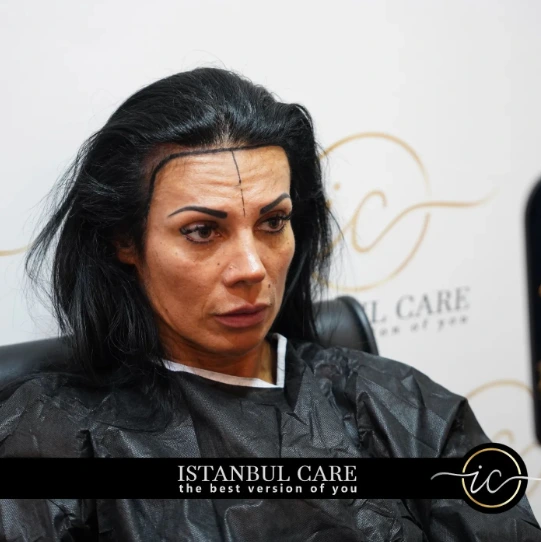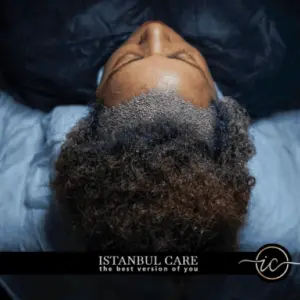Turkey has positioned itself as a global hub for Woman Hair Transplant in Turkey, offering innovative treatments and tailored solutions designed to address the unique hair loss challenges faced by women worldwide.
With its advanced medical technologies, experienced specialists, and patient-centered approach, Turkey continues to attract women seeking high-quality, reliable, and effective hair restoration procedures.
| Technique | Operation Time | Recovery Time | Price (Turkey) |
|---|---|---|---|
| FUE for Women | 4 – 6 hours | 2 days | $2,000 – $2,500 |
| DHI for Women | 6 – 8 hours | 2 days | $2,500 – $3,000 |
| Sapphire FUE | 5 – 7 hours | 2 days | $2,200 – $2,700 |
| Unshaven Hair Transplant | 8 – 10 hours | 2 days | $3,000 – $3,500 |
| FUSS for Women | 3 – 5 hours | 2 days | $2,000 – $2,500 |

Female Hair Transplant In Turkey
Different from popular belief, it is not just men who experience hair loss. While aging hair loss is relatively expected for men, hair loss in women is usually unpredictable, no matter the age. The reality is that about one third of women experience hair loss at some point in their lives. More than 10% of women who are in the perimenopausal stage of their lives and more than 50% of women over 65 have issues with thinning hair.
Hair loss in women is a debilitating problem for them, which is not accepted as a significant problem. Being considered as socially unacceptable, hair loss has a greater impact for women in the society than for men. It can badly affect a woman’s emotional well-being, self-image and quality of life, bringing psychological distress and impairing social life.
Are You a Good Candidate For Female Hair Transplant?
Women usually have a different type of hair loss than men. Male hair loss affects the top of the head while healthy hair remains intact on the sides and back of the head. But, female hair loss usually affects the head in general as women do not have large areas of hair follicles that are resistant to falling. The sides and back of the hair tend to be spread just like the front and top of the head.
The women considered potential good candidates for hair transplant procedures are as follows:
- You are diagnosed with hair loss in a female-pattern with characteristics similar to that of male-pattern loss and have enough donor hair for hair restoration surgeries.
- You have a naturally high hairline which is a worrying condition for you.
- Due to aging your hairline is getting reduced.
- Due to non-hormonal traction alopecia you have a partial loss of hair.
- As a result of trauma, accidents or burns you are suffering a hair loss.
- You have alopecia marginalis, a type of inherited pattern of hair loss that affects the forehead and temples.
- You suffer from hair loss due to trichotillomania, a condition in which the patient has an uncontrolled desire to remove hair from the scalp, eyebrows, etc.

Female Hair Transplant Cost Comparison
| Location | Cost | Savings Compared to USA | Savings Compared to Europe |
|---|---|---|---|
| USA | $8,000 | — | — |
| Europe | $6,500 | $1,500 | — |
| Turkey (General) | €2,000 – €3,000 | $5,000 – $6,000 | €3,500 – €4,500 |
If you choose Turkey for a female hair transplant, you save up to $5,000 – $6,000 compared to the USA and €3,500 – €4,500 compared to Europe.
All-Inclusive Woman Hair Transplant Turkey Package
- Operation with FUE Sapphire technique (by the Doctor)
- 2 Plasma/PRP injection
- Blood test (before surgery)
- Medications after surgery (stomach protector, painkillers, anti-swelling, antibiotics, cream)
- Special shampoo and lotion (special formula from the Istanbul Care laboratory)
- Medical neck pillow
- Medical check-up (after transplant)
- Hair washing (by our doctor after the operation)
- Lunch on the day of the operation
Accommodation: Hotel 2 nights (breakfast included)
VIP transport: Airport-Hospital-Hotel
Guarantee Certificate
Personal translator
Follow-up and support for 1 year
1 companion included
News: RED LIGHT THERAPY
News: TREATMENT WITH STEM CELLS
All-Inclusive Woman Hair Transplant Turkey Package
- Operation with Direct Hair Implantation technique (by the Doctor)
- 2 Plasma/PRP injection
- Blood test (before surgery)
- Medications after surgery (stomach protector, painkillers, anti-swelling, antibiotics, cream)
- Special shampoo and lotion (special formula from the Istanbul Care laboratory)
- Medical neck pillow
- Medical check-up (after transplant)
- Hair washing (by our doctor after the operation)
- Lunch on the day of the operation
Accommodation: Hotel 2 nights (breakfast included)
VIP transport: Airport-Hospital-Hotel
Guarantee Certificate
Personal translator
Follow-up and support for 1 year
1 companion included
News: RED LIGHT THERAPY
News: TREATMENT WITH STEM CELLS
How Is Female Hair Transplant Applied?
A doctor who specializes in hair restoration examines the patient in detail to ensure that they do not have any kind of curable medical condition that contributes to hair loss. This procedure avoids unnecessary hair transplants. Given the fact that female hair transplant options are the same as male ones, the second step is deciding whether Follicular Unit Extraction (FUE) or Direct Hair Implantation (DHI) is the best option to get the results desired.
Female hair transplant can be quite complicated as female hair loss patterns usually tend to be more scattered than in their male counterparts. Yet, if the patient’s conditions regarding hair density are quite satisfactory, an experienced medical team will provide the desired results with a high success rate.
The hair transplant techniques used for female hair restoration, FUE and DHI, are advanced procedures of implantation performed using the same extraction technique. They differ in the types of implant equipment used. The procedures start with the administration of anesthesia. Once the anesthetic effect begins, the extraction phase follows. With the help of a micromotor and a millimetric punch, the hair follicles are extracted from the donor area. Further, very small incisions are made with the help of microneedles at the recipient site. DHI does not require this incision stage. Once the incisions are made, implantation begins. For DHI, the Choi pen is used. It is a special implantation device that can contain 1 to 4 grafts at a time. The extracted grafts are carefully inserted into the small incisions. Eventually, the hair follicle transplant ends.
Newly transplanted hair grows in the same way as a patient’s original hair in about 3 to 6 months after surgery. It takes about 12 to 18 months for the hair to come to the desired density, having a voluminous appearance.
Advantages of Female Hair Transplant In Turkey
Female hair loss has a very frustrating effect, so you may be thinking that hair transplant surgeries are very common parts of the process of finding solutions among women with hair loss. Unfortunately, despite the annual increase in hair restoration surgeries, female patients continue to be hesitant about these procedures for various reasons. However, awareness of the advantages and benefits of female hair restoration is a key factor in overcoming hesitation regarding hair transplant surgeries.
# MINIMAL OCCUPATION
Hair transplant surgeries are minimally invasive procedures, especially with techniques such as FUE and DHI. If you are unable to take a few days off, you can return to work the next day after surgery, although a short recovery period is advised.
# NATURAL-LOOKING RESULTS
Both FUE and DHI transplant operations provide the most natural results compared to other less advanced techniques. Some patients worry that the transplanted hair may be easily noticeable, but with a qualified doctor and advanced surgical equipment, the risk of noticeable misalignment is eliminated.
# SIMPLE AND WITHOUT PAIN
Hair transplants are relatively simple procedures that take less than a day. Patients can return to their daily lives within a day or two. Local anesthesia ensures that the procedure is painless, and any mild after-effects are easily manageable with minimal precautions.
# MANAGEABLE HAIR
Since hair transplants use the patient’s own hair follicles, the body does not reject them. This ensures that newly transplanted hair will function just like natural hair and does not require special care, such as specific shampoos or treatments, to maintain density.
# PERMANENT RESULTS
After FUE and DHI hair transplantation, the transplanted hair will shed initially as expected, and new hair will regrow permanently within 3-6 months.
# MENTAL IMPACT
Hair plays a significant role in body aesthetics. Women experiencing hair loss often struggle with self-image and confidence issues. Undergoing hair restoration surgery can provide a strong boost to mental well-being, improving body image and overall perception.

Speak with our expert Hair Transplant specialists
We’re ready to answer your questions
Recovery Period After A Hair Transplant
Once the specialists complete the operation, the patient quickly enters the healing process because neither FUE nor DHI cause tissue damage.
After the operation, you can leave the clinic immediately without any problems. You may have scabs that are visible all over the affected area. The back of the head and forehead may feel swollen and tight for several days. Yet, there is no need to worry, as these symptoms will quickly disappear. To speed up the recovery phase, consider the following dos and don’ts:
- Carefully follow your doctor’s instructions on how often you can wash your hair and use only the recommended cleansing products.
- Do not brush your hair for 2 to 3 weeks.
- Avoid hard exercise or heavy physical activity for 2 weeks.
- Apply an ice pack to reduce swelling (if any).
- Rest is essential for a fast recovery.
- Take prescribed medications, such as antibiotics and painkillers, as instructed by your doctor.
- Sleep with your head elevated for at least 3 days after surgery.
In 4 to 6 weeks after the procedure, you might experience the so-called ‘shock loss,’ which is the temporary loss of newly transplanted hair. This hair shedding is expected and normal, helping to create a strong foundation for healthy hair growth. Within 6 months, you will notice new hair growth, and after 1 year, you will achieve the voluminous, natural-looking hair you have been waiting for.
Woman Hair Transplant in Turkey
Turkish doctors are highly successful in hair transplant procedures, attracting many people from abroad. Istanbul Care Clinic is one of the best hair transplant clinics in Turkey. If you are considering a hair transplant, please contact us! We offer the best woman hair transplant prices and top-quality services.
Frequently Asked Questions
Yes, hair transplant can be very successful for women, especially those experiencing genetic hair loss, traction alopecia, or thinning hair. The success largely depends on the skill of the surgeon and the extent of hair loss.
The cost of a female hair transplant varies depending on factors like the technique used and the number of grafts needed. On average, the cost ranges from $2,000 to $4,000, but it can be higher for more complex cases.
Yes, hair transplants for women are generally permanent. The transplanted hair follicles come from areas of the scalp that are resistant to hair loss. However, it’s important to maintain a healthy lifestyle and follow post-op care to ensure long-lasting results.
International Resources
For more information on women’s hair transplantation, you can refer to the following resources:




